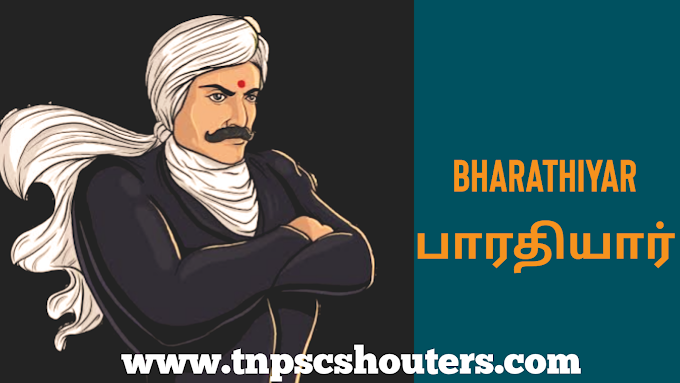TAMIL
- சுகாதாரம் மற்றும் குடும்ப நல அமைச்சகம், 10-19 வயதுக்குட்பட்ட இளம் பருவத்தினருக்கான சுகாதாரத் திட்டத்தைத் தொடங்கியுள்ளது, இது அவர்களின் ஊட்டச்சத்து, இனப்பெருக்க ஆரோக்கியம் மற்றும் போதைப்பொருள் துஷ்பிரயோகம் போன்றவற்றை இலக்காகக் கொண்டது.
- ராஷ்ட்ரிய கிஷோர் ஸ்வஸ்த்ய காரியக்ரம் ஜனவரி 7, 2014 அன்று தொடங்கப்பட்டது. இந்த திட்டத்தின் முக்கியக் கொள்கை இளம் பருவத்தினரின் பங்கேற்பு மற்றும் தலைமை, சமத்துவம் மற்றும் உள்ளடக்கம், பாலின சமத்துவம் மற்றும் பிற துறைகள் மற்றும் பங்குதாரர்களுடன் மூலோபாய கூட்டாண்மை ஆகும்.
- இந்தியாவில் உள்ள அனைத்து இளம் பருவத்தினரும் தங்கள் உடல்நலம் மற்றும் நல்வாழ்வு தொடர்பான தகவலறிந்த மற்றும் பொறுப்பான முடிவுகளை எடுப்பதன் மூலமும், அவர்களுக்குத் தேவையான சேவைகள் மற்றும் ஆதரவை அணுகுவதன் மூலமும் அவர்களின் முழு திறனையும் உணர இந்த திட்டம் திட்டமிடுகிறது.
- இந்தத் திட்டத்தைச் செயல்படுத்த வழிகாட்ட, MOHFW, UNFPA உடன் இணைந்து தேசிய இளம்பருவ சுகாதார உத்தியை உருவாக்கியுள்ளது.
- இளம் பருவத்தினரின் ஆரோக்கியம் மற்றும் வளர்ச்சித் தேவைகளுக்கான தொடர்ச்சியான கவனிப்பின் அடிப்படையில் மிகவும் முழுமையான மாதிரியில் கவனம் செலுத்த, தற்போதுள்ள கிளினிக் அடிப்படையிலான குணப்படுத்தும் அணுகுமுறையை இது மறுசீரமைக்கிறது.
- ராஷ்ட்ரிய கிஷோர் ஸ்வஸ்த்ய காரியக்ரம் (தேசிய இளம்பருவ சுகாதாரத் திட்டம்), 243 மில்லியன் இளம் பருவத்தினரின் சுகாதாரத் தேவைகளை விரிவாகப் பூர்த்தி செய்யும்.
- இது சக கல்வியாளர்கள் மூலம் சமூகம் சார்ந்த தலையீடுகளை அறிமுகப்படுத்துகிறது, மேலும் இது மற்ற அமைச்சகங்கள் மற்றும் மாநில அரசாங்கங்களுடனான ஒத்துழைப்பால் ஆதரிக்கப்படுகிறது.
- இந்தியாவில் உள்ள அனைத்து இளம் பருவத்தினரும் தங்கள் உடல்நலம் மற்றும் நல்வாழ்வு தொடர்பான தகவலறிந்த மற்றும் பொறுப்பான முடிவுகளை எடுப்பதன் மூலமும், அவர்களுக்குத் தேவையான சேவைகள் மற்றும் ஆதரவை அணுகுவதன் மூலமும் தங்கள் முழு திறனையும் உணர முடியும் என்று இந்த மூலோபாயம் கருதுகிறது.
- இந்த பார்வையை செயல்படுத்துவதற்கு அரசாங்கம் மற்றும் சுகாதாரம், கல்வி மற்றும் தொழிலாளர் துறைகள் மற்றும் இளம் பருவத்தினரின் சொந்த குடும்பங்கள் மற்றும் சமூகங்கள் உள்ளிட்ட பிற நிறுவனங்களின் ஆதரவு தேவைப்படுகிறது.
- இளம் பருவத்தினரின் ஆரோக்கியத்திற்கான ஒரு நிகழ்ச்சி நிரலை உருவாக்க, இளைஞர்களின் பார்வையில் அதிகரிப்பு மற்றும் அவர்களின் உடல்நலம் மற்றும் வளர்ச்சிக்கான சவால்களைப் புரிந்துகொள்வது அவசியம்.
- இளமைப் பருவத்திற்கு வெற்றிகரமான மாற்றத்தை உறுதிசெய்யும் அணுகுமுறைகளை செயல்படுத்த வேண்டும். இதற்கு பல பரிமாண சுகாதாரத் தேவைகள் மற்றும் இளம் பருவத்தினரின் சிறப்புக் கவலைகள் தேசியக் கொள்கைகள் மற்றும் பல்வேறு நிலைகளில் உள்ள திட்டங்களில் புரிந்து கொள்ளப்பட வேண்டும்.
- ஊட்டச்சத்தை மேம்படுத்தவும்
- பருவ வயது பெண்கள் மற்றும் சிறுவர்களிடையே ஊட்டச்சத்து குறைபாட்டின் பரவலைக் குறைக்கவும்
- இளம்பெண்கள் மற்றும் சிறுவர்களிடையே இரும்புச்சத்து குறைபாடு இரத்த சோகையின் (IDA) பரவலைக் குறைக்கவும்
- பாலியல் மற்றும் இனப்பெருக்க ஆரோக்கியத்தை மேம்படுத்தவும்
- SRH தொடர்பாக அறிவு, அணுகுமுறைகள் மற்றும் நடத்தையை மேம்படுத்தவும்
- டீனேஜ் கர்ப்பத்தை குறைக்கவும்
- குழந்தை பிறப்புக்கான தயார்நிலை, சிக்கலுக்கான தயார்நிலையை மேம்படுத்துதல் மற்றும் இளம் பருவ பெற்றோருக்கு ஆரம்பகால பெற்றோருக்குரிய ஆதரவை வழங்குதல்
- மன ஆரோக்கியத்தை மேம்படுத்தவும்
- இளம் பருவத்தினரின் மனநல கவலைகளை நிவர்த்தி செய்யுங்கள்
- காயங்கள் மற்றும் வன்முறையைத் தடுக்கவும்
- இளம் பருவத்தினரிடையே காயங்கள் மற்றும் வன்முறை (GBV உட்பட) தடுப்பதற்கான சாதகமான அணுகுமுறைகளை ஊக்குவிக்கவும்
- பொருள் தவறாகப் பயன்படுத்துவதைத் தடுக்கவும்
- போதைப்பொருள் துஷ்பிரயோகத்தின் பாதகமான விளைவுகள் மற்றும் விளைவுகள் பற்றிய இளம் பருவத்தினரின் விழிப்புணர்வை அதிகரிக்கவும்
- புதிய இளம்பருவ ஆரோக்கியம் (AH) உத்தியானது 10-14 வயது மற்றும் 15-19 வயதுடையவர்களில் உலகளாவிய பாதுகாப்புடன் கவனம் செலுத்துகிறது,
- அதாவது ஆண்கள் மற்றும் பெண்கள்; நகர்ப்புற மற்றும் கிராமப்புற; பள்ளியில் மற்றும் பள்ளிக்கு வெளியே; திருமணமான மற்றும் திருமணமாகாத; மற்றும் பாதிக்கப்படக்கூடிய மற்றும் குறைந்த சேவை.
- இலக்குகளை அடைவதற்கான உத்திகள்/தலையீடுகள் பரந்த அளவில் பின்வருமாறு தொகுக்கப்படலாம்:
- சமூகம் சார்ந்த தலையீடுகள்
- சக கல்வி (PE)
- காலாண்டு இளம்பருவ சுகாதார தினம் (AHD)
- வாராந்திர இரும்பு மற்றும் ஃபோலிக் அமிலம் கூடுதல் திட்டம் (WIFS)
- மாதவிடாய் சுகாதாரத் திட்டம் (MHS)
- வசதி அடிப்படையிலான தலையீடுகள்
- இளம் பருவத்தினருக்கான நட்பு சுகாதார கிளினிக்குகளை வலுப்படுத்துதல் (AFHC)
- குவிதல்
- உடல்நலம் மற்றும் குடும்ப நலனுக்குள் - FP, MH (VHND உட்பட), RBSK, NACP, தேசிய புகையிலை கட்டுப்பாட்டுத் திட்டம், தேசிய மனநலத் திட்டம், NCDகள் மற்றும் IEC
- பிற துறைகள்/திட்டங்களுடன் - WCD (ICDS, KSY, BSY, SABLA), HRD (AEP, MDM), இளைஞர் விவகாரங்கள் மற்றும் விளையாட்டு (இளம் பருவத்தினருக்கு அதிகாரமளிக்கும் திட்டம், தேசிய சேவைத் திட்டம், NYKS, NPYAD)
- தனிப்பட்ட தொடர்புகளில் கவனம் செலுத்துவதன் மூலம் சமூக மற்றும் நடத்தை மாற்ற தொடர்பு
- The Ministry of Health & Family Welfare has launched a health programme for adolescents, in the age group of 10-19 years, which would target their nutrition, reproductive health and substance abuse, among other issues.
- The Rashtriya Kishor Swasthya Karyakram was launched on 7th January, 2014. The key principle of this programme is adolescent participation and leadership, Equity and inclusion, Gender Equity and strategic partnerships with other sectors and stakeholders.
- The programme envisions enabling all adolescents in India to realize their full potential by making informed and responsible decisions related to their health and well-being and by accessing the services and support they need to do so.
- To guide the implementation of this programme, MOHFW in collaboration with UNFPA has developed a National Adolescent Health Strategy. It realigns the existing clinic-based curative approach to focus on a more holistic model based on a continuum of care for adolescent health and developmental needs.
- The Rashtriya Kishor Swasthya Karyakram (National Adolescent Health Programme), will comprehensively address the health needs of the 243 million adolescents. It introduces community-based interventions through peer educators, and is underpinned by collaborations with other ministries and state governments.
- The strategy envisions that all adolescents in India are able to realise their full potential by making informed and responsible decisions related to their health and well-being, and by accessing the services and support they need to do so.
- The implementation of this vision requires support from the government and other institutions, including the health, education and labour sectors as well as adolescents’ own families and communities.
- Building an agenda for adolescent health requires an escalation in the visibility of young people and an understanding of the challenges to their health and development. It needs implementation of approaches that will ensure a successful transition to adulthood.
- This requires that the multi-dimensional health needs and special concerns of adolescents are understood and addressed in national policies and a range of programmes at different levels.
- Improve nutrition
- Reduce the prevalence of malnutrition among adolescent girls and boys
- Reduce the prevalence of iron-deficiency anaemia (IDA) among adolescent girls and boys
- Improve sexual and reproductive health
- Improve knowledge, attitudes and behaviour, in relation to SRH
- Reduce teenage pregnancies
- Improve birth preparedness, complication readiness and provide early parenting support for adolescent parents
- Enhance mental health
- Address mental health concerns of adolescents
- Prevent injuries and violence
- Promote favourable attitudes for preventing injuries and violence (including GBV) among adolescents
- Prevent substance misuse
- Increase adolescents’ awareness of the adverse effects and consequences of substance misuse
- Address NCDs
- Promote behaviour change in adolescents to prevent NCDs such as hypertension, stroke, cardio-vascular diseases and diabetes
- The new adolescent health (AH) strategy focuses on age groups 10-14 years and 15-19 years with universal coverage, i.e. males and females; urban and rural; in school and out of school; married and unmarried; and vulnerable and under-served.
- Strategies/interventions to achieve objectives can be broadly grouped as:
- Community based interventions
- Peer Education (PE)
- Quarterly Adolescent Health Day (AHD)
- Weekly Iron and Folic Acid Supplementation Programme (WIFS)
- Menstrual Hygiene Scheme (MHS)
- Facility based interventions
- Strengthening of Adolescent Friendly Health Clinics (AFHC)
- Convergence
- Within Health & Family Welfare - FP, MH (incl VHND), RBSK, NACP, National Tobacco Control Programme, National Mental Health Programme, NCDs and IEC
- With other departments/schemes - WCD (ICDS, KSY, BSY, SABLA), HRD (AEP, MDM), Youth Affairs and Sports (Adolescent Empowerment Scheme, National Service Scheme, NYKS, NPYAD)
- Social and Behaviour Change Communication with focus on Inter Personal Communication










